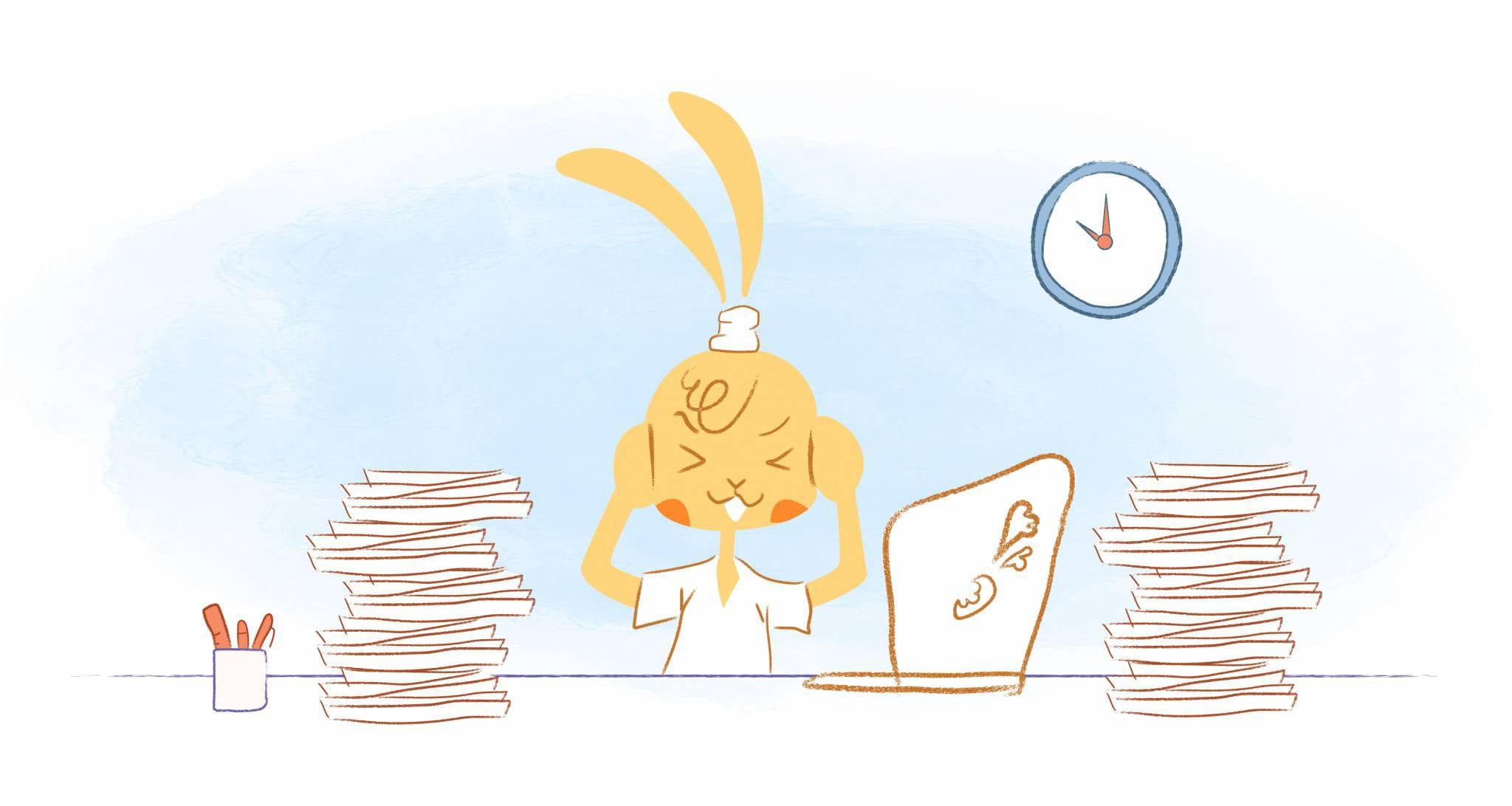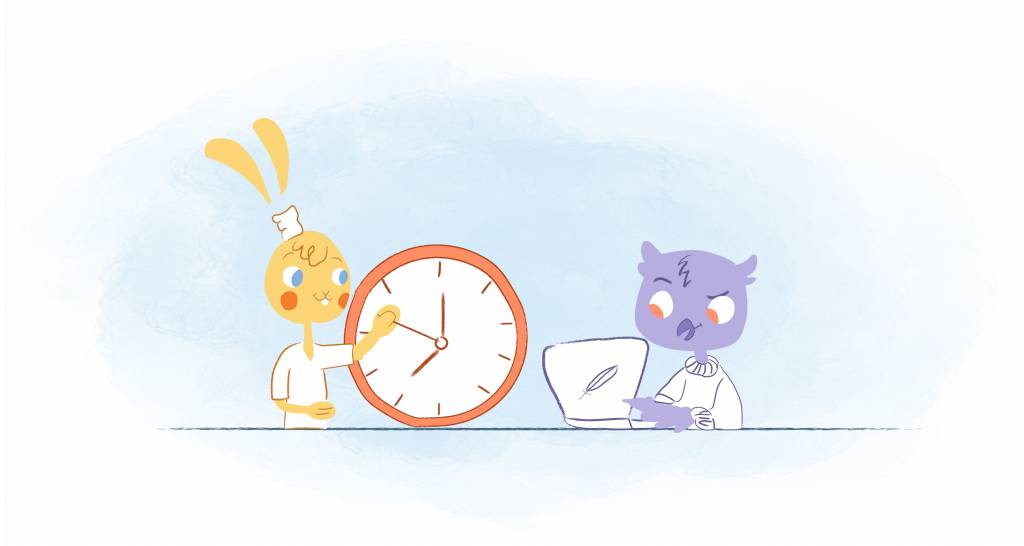

When it comes to boosting your productivity, you’ve tried it all. You’ve learned how to prioritize lists and build a schedule around your peak hours. You have optimized your work environment and even learned how to say “no” to unnecessary time requests.
And, yet, despite your best efforts, you’re still wrestling with productivity. What’s going on here?
Before throwing in the proverbial white towel, there might be a simple explanation. Most productivity tips involve you doing more within the same period of time. While that’s certainly nothing to balk at, it doesn’t take into account Parkinson’s Law.
What is Parkinson’s Law?
Parkinson’s Law is a concept made famous by British historian and author Cyril Northcote Parkinson. The idea actually stems from a well-known 1955 article he penned for The Economist. It was later reprinted with other essays for the 1958 Parkinson’s Law: The Pursuit of Progress.
Based on his observations, Parkinson developed the adage that “work expands to fill the time available for its completion.” To put that more simply, the more time you have to complete something, the longer you’ll put it off. And that might end up leading to you procrastinating.
I’m sure at some point we’ve all been guilty of this. Think back to when you have a paper due in college. You had two weeks to get it done, but you waited until there were only 3-days left.
You have a deadline to meet at the end of the month. However, you push this off until the final two weeks. Or, it could be something as trivial as wasting an hour to figure out what you’re going to have for lunch.
Why do we do this to ourselves? Well, Parkinson believed that if given extra time to complete a task, people will often take advantage of that time. More interesting is that we will do this even if we don’t really need the extra time.
How Does Parkinson’s Law Affect Productivity?
“Is there some truth to the notion that without strict time constraints, we waste time, and our work takes longer to complete?” asks Tiffanie Wen for the BBC. In the decades since Parkinson wrote his essay, studies “have shown it has some merit.”
Back during the 1960s, researchers showed that when subjects were ‘accidentally’ given extra time to complete a task, the task took longer to complete,” adds Wen. “In another set of studies from 1999, subjects were asked to evaluate four sets of photos. When they were told the fourth set was canceled, they spent more time ‘dallying’ on the third, rather than just finishing the task more quickly.”
What exactly does that have to do with productivity? Essentially, as opposed to working efficiently to do more in less time, we lengthen the process. As a consequence, we devote more time to trivial tasks.
If you’re a perfectionist, this could have the opposite effect. You may use the extra time to overcomplicate tasks. For example, if you need to prepare an agenda for a meeting that takes place in three weeks, you may include too much information or worry about every nuance that could go wrong.
The answer? Take into account Parkinson’s Law by assigning yourself less time to get tasks done.
While that may not sound effective, a study funded by the Swedish government found that it’s possible. In this case, nurses who switched from an eight-hour day down to six had less stress, fewer sick days, and increased productivity.
Another study on Parkinson’s Law and productivity found that “members of logging crews showed a significantly higher rate of output when limited to mill deliveries on 1 or 2 days/wk than when no such buying restrictions were in effect. Since both owners and crew members were paid on a piece-rate basis, there was an incentive to maximize production early when restrictions were operative.”
What do those studies show? Shortened deadlines not only help you overcome procrastination, but they can also push you to work more efficiently. And, that means you’ll be able to get more done in less time.
Hacking Parkinson’s Law to Boost Productivity
So, how can you realistically and effectively overcome Parkinson’s Law? In my opinion, the first step should be tracking your time — preferably for a month. It doesn’t matter if you use a time tracker or productivity journal. You really need a way to find out how long it takes for you to complete certain tasks.
For example, let’s say that you write a blog post each day for your company’s site. Initially, you may block out three hours in the morning to work on this. You notice that you really only need two hours.
Why’s that important? Because you now know that you didn’t need that extra hour. In fact, because you had more than enough time to write, you may have been goofing off during that time.
Going forward, you would only block out for two hours. And, that means that you’re spending the necessary amount of time on your priorities and to-do-list items.
But, there’s another advantage here. You can also use that knowledge to hack Parkinson’s Law to make you even more productive.
Cut your deadlines in half.
“The essence of Parkinson’s Law is to set deadlines that are much shorter than you’ve ever set them before,” writes Jari Roomer in a Medium post. “This forces you to focus on the essentials, avoid distractions, and stop procrastinating — making you extremely productive and helping you achieve better results in less time.”
“When you have too much time available for completing a task or project, you won’t feel the necessity, motivation or pressure to work with focus and intensity,” adds Roomer. “As there’s space available to waste time, stress, and worry, you’ll (subconsciously) make use of this space.”
Remove this space by making your deadlines shorter. Much shorter. In fact, Roomer suggests “cutting your deadlines in half.”
It might seem unrealistic at first. But, “but you may be surprised at how much more productive you become,” Roomer states. “It’s very likely that you’ll find ways to get it done within the limited time — and get it done well.”
What if you aren’t able to meet the deadline? It’s either because you are still getting distracted or wasting time on the non-essentials. Or, “you need to slightly loosen your deadline for the next time until you find your ideal ‘sweet spot.’”
Race against the clock.
Remember the anecdote about writing blog posts? Usually, it takes two hours to complete. But, what if you give yourself less time, like an hour and a half?
Suddenly, this becomes more or a game. In fact, I tend to do this on the days that I’m dragging. Since I have less time to complete something, it’s an effective way to kick myself into high gear.
Another way to this when planning out your week is to use time blocking. In particular, the Pomodoro Technique where you work for around 25-minutes and then take a 15-minute break — after four of these, you take a 30-minute break.
In addition to helping you plan, the Pomodoro Technique fights procrastination, decreases fatigue, and breaks the habit of multitasking. Moreover, it lets you deal with distractions and interruptions. And, it can keep you motivated since you’re marking and rewarding your progress after each session.
Use blackmailing.
Obviously, this doesn’t involve anything illegal or unethical. Rather, it’s a way to trick yourself into focusing on the task at hand. For example, if you don’t complete that blog post in under two hours, then you aren’t going to make that Starbucks run.
What if you succeed in your goal? Go ahead and reward yourself. The key is to use individualized motivators.
Create a consequence.
Another way to work faster and only zero-in on what’s important? Try something like going to a coffee shop without a laptop charger. On average, that will be between 1.5 hours to 4 hours — this depends on the model and applications are being used.
Because you’re on borrowed time, you’ll force yourself to get your work done before your laptop runs out of juice. As such, you have no time to lollygag around. Instead, you have no other choice but to remain focused and motivated.
Align your work with external obligations.
Here’s an idea from Jonathan Levi’s “Become a Speed Demon” productivity course. Plan your day so that you must complete your most important task with external obligations. The reason this could work is that these commitments aren’t as arbitrary as your self-imposed deadlines.
For example, let’s say that you’re meeting a friend or client for lunch at 12:30. It takes 30-minutes to get there. So, you have to be out of the door before noon.
Knowing that in advance, you must knock-out your most important task of the day before leaving. If not, that’s going to throw off the rest of your day. It’s going to be difficult to focus on anything else since the brain dwells on unfinished tasks.
One last thing.
These are just five strategies you can use to overcome Parkinson’s Law. Personally, I think a lot of people use a blend of each until they create their own Frankenstein’s Monster-like method. And, that’s totally acceptable.
The main takeaway is that you need to be aware of this principle. When you are, you can then find ways to beat it to waste valuable time. And, more importantly, procrastinating on what you need to get done.











John Hall
John Hall is the co-founder of Calendar a scheduling and time management app. He’s also a keynote speaker that you can book at http://www.johnhallspeaking.com.